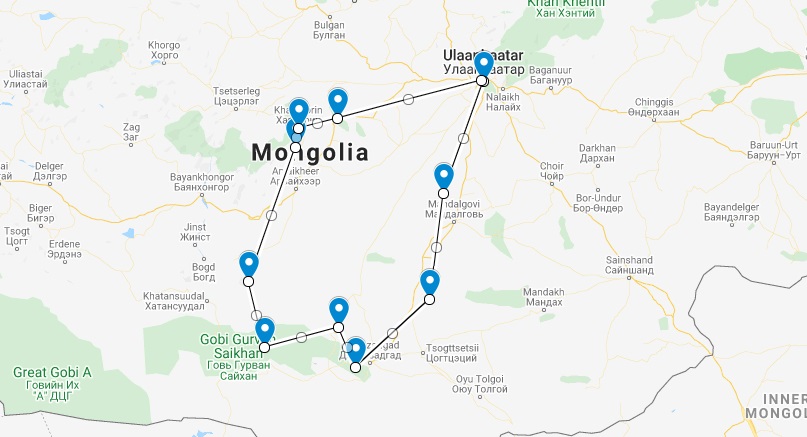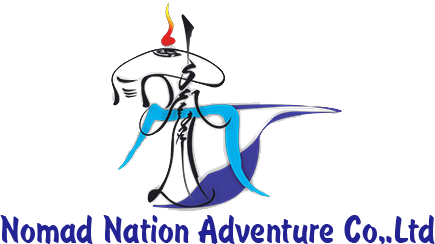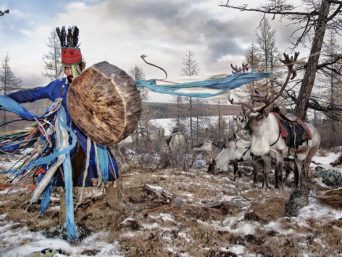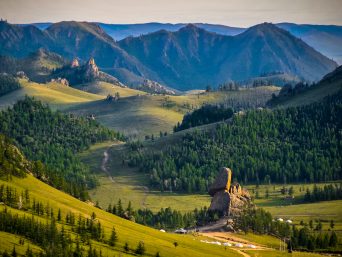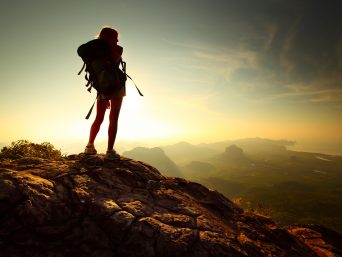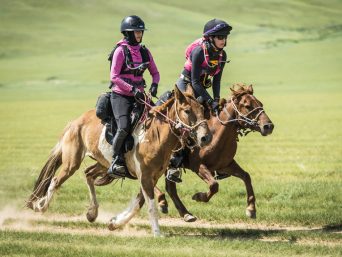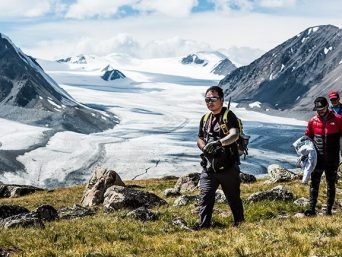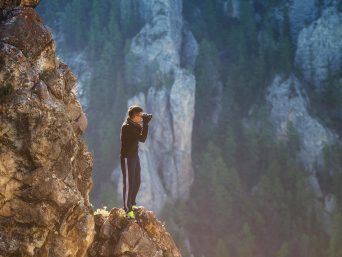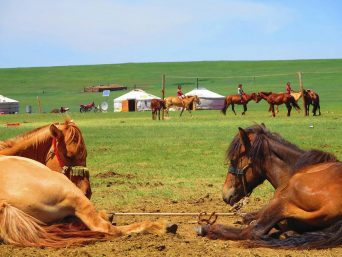Quite possible to modify this program according to your wishes!!!
Day – 1 : Arrive in Ulan Bator city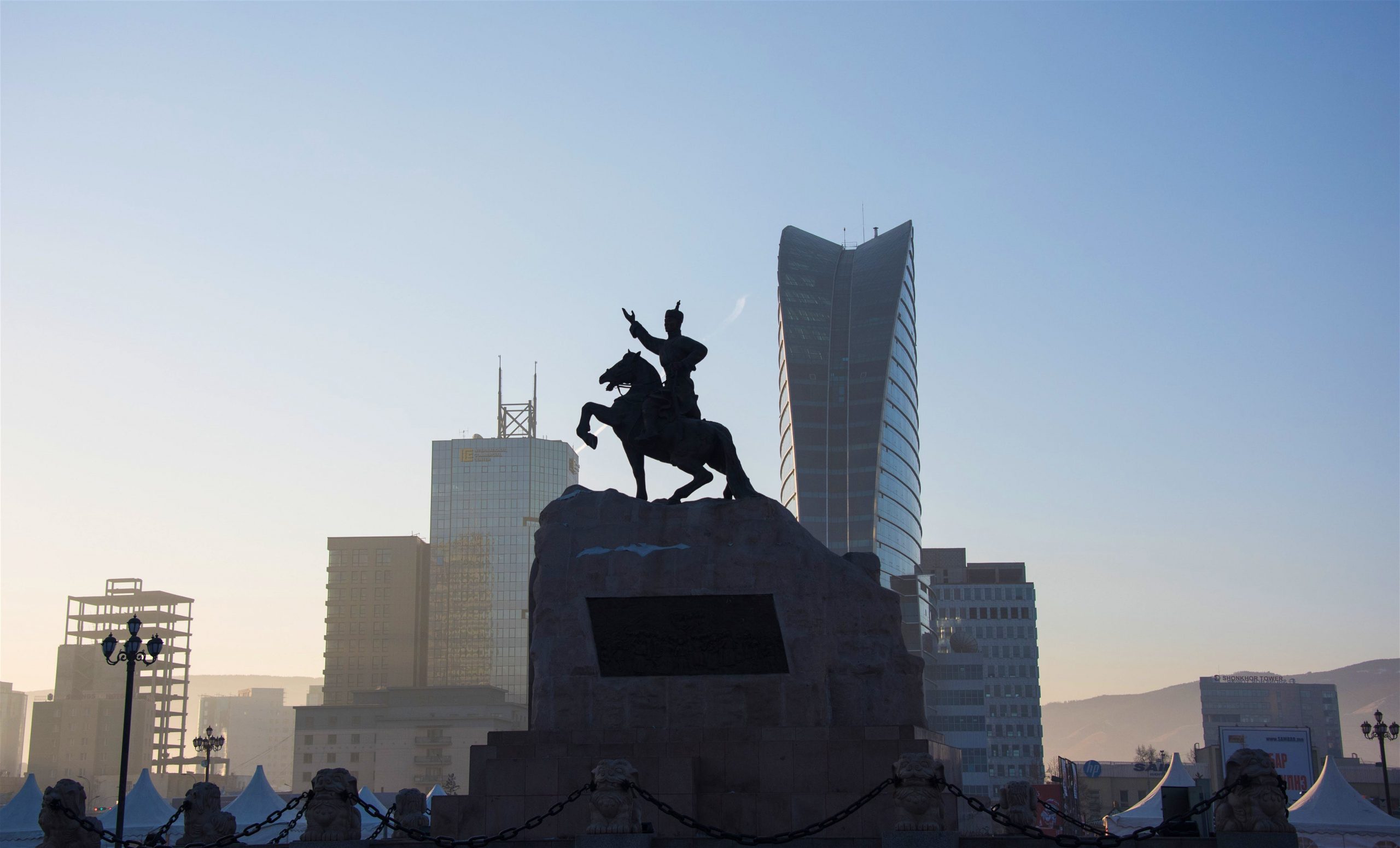
Arrival at Ulan Bator and transfer to your hotel for a warm shower and a moment to relax after this long flight.
Afternoon, visit of Gandantegchinlin Monastery. Built in 1809, the Gandantegchinlin Monastery – formerly known as the Gandan Monastery – is a Tibetan-style Buddhist monastery located in Ulan Bator. Its name of Tibetan origin can be translated as “Great site full of Joy”.Several hundred monks currently reside there.
It contains a statue of Megjid-Janraiseg (Bodhisattva Avalokiteshvara – called Chenrezig in Tibetan) by 25 meters high.
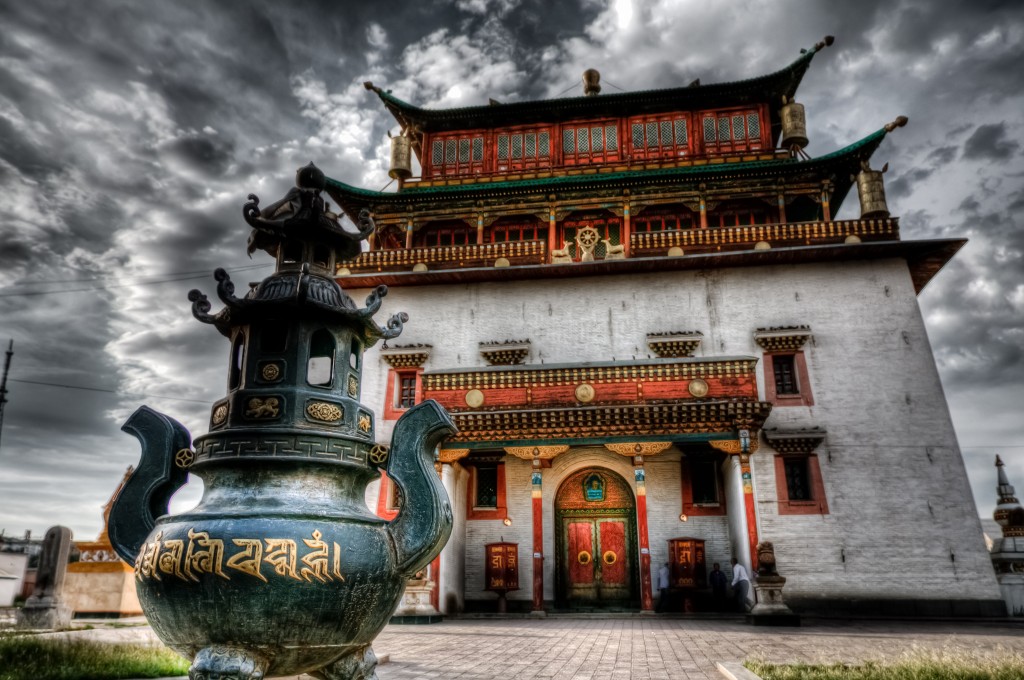 The original statue, made of copper, was erected in 1911 and was dismantled in 1937 by Soviet troops (the remains of the statue were subsequently used to make bullets during the siege of Leningrad). Following the fall of communist regimes, it was rebuilt in 1996 with donations of gold from Nepal and Japan.
The original statue, made of copper, was erected in 1911 and was dismantled in 1937 by Soviet troops (the remains of the statue were subsequently used to make bullets during the siege of Leningrad). Following the fall of communist regimes, it was rebuilt in 1996 with donations of gold from Nepal and Japan.
Adorned with gold and nearly 2,286 precious stones, the statue weighs over 20 tons and is covered with nearly 100 kg of silk clothing.
Visit of the National Museum of Mongolian History. The National Museum of Mongolian History tells the story of the country, from prehistoric times to today. In this museum there is also an ethnographic section with costumes and jewels from various ethnic groups of countries: Kazakhstan, Buriats, Clzemchins…
Dinner and overnight at the hotel.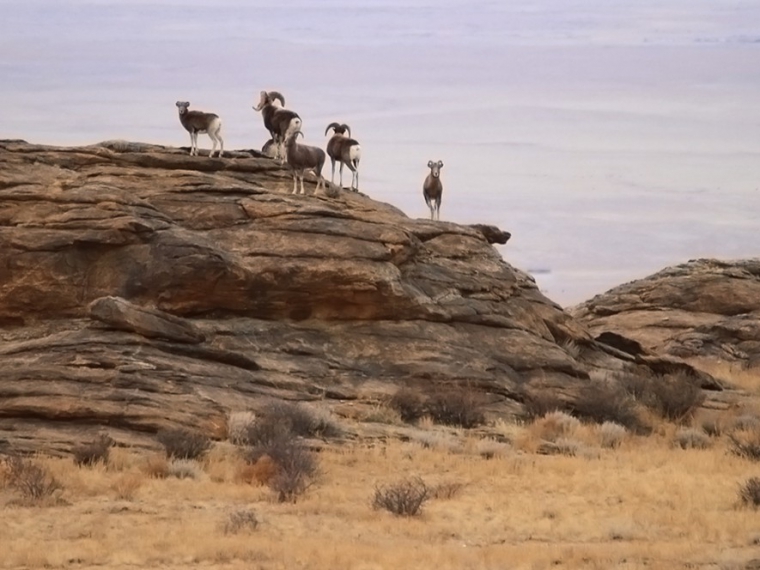
Day 2: Ulaanbaatar to Baga Gazriin Chuluu (200km – 3 to 4 hours drive)
Breakfast at the hotel; we will start our journey to the Middle Gobi. Today we will travel about 200km to Baga Gazriin Chuluu. The most beautiful place where we camp.
Baga gazriin chuluu:
Located on 37 km northwest of Delgertsetsogt soum of Dundgovi aimag. Around 1768 meters high, granite stone zones an area of 300 km. There are many springs in the valleys as well as ancient tombs, cairns, rock paintings and monuments. There are many things to see in the Sudut canyon, the Jargalant Cave, the Eye medical spring, The Cave, the Hun tombs, and so on.
Planned activities: To visit eyes springs, Travel through National park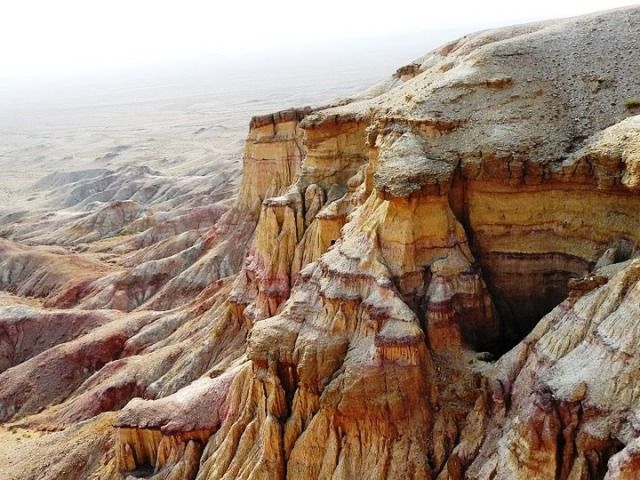
Lunch at a roadside restaurant.
Dinner and overnight bivouac
Day 3: Baga gazriin chuluu – Tsagaan Suvarga White stupa (300km – 4 to 6 hours drive)
Breakfast bivouac; we will visit to a wonderful place named Tsagaan Suvarga. 60 meter high canyon is stretching from the west to the east. Mother Nature’s beautiful formations. It might be similar to Grand Canyon in USA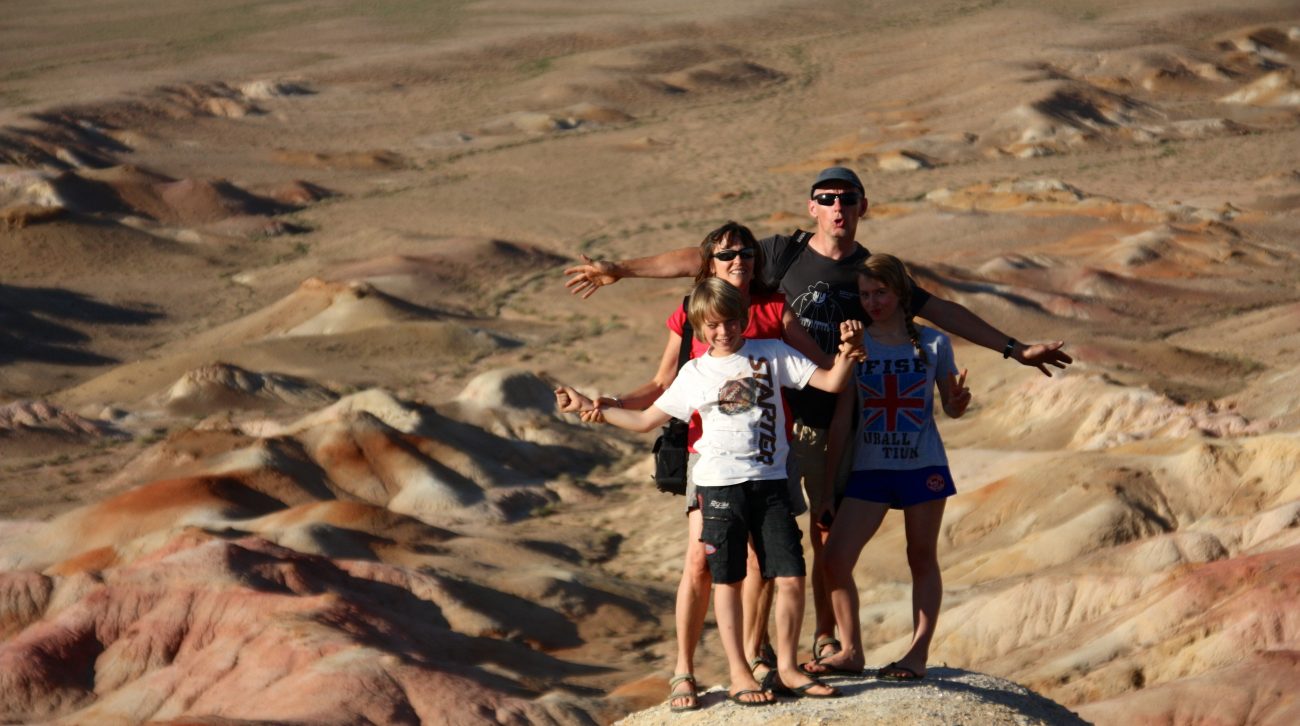 but so colorful. Feels like an ocean floor. Interesting facts, you might find fossils, fossil tree and red corals. We will camp over there.
but so colorful. Feels like an ocean floor. Interesting facts, you might find fossils, fossil tree and red corals. We will camp over there.
Planned activities: to walk in the cliffs of Tsagaan Suvarga White Stupa
Lunch at a roadside restaurant.
Dinner and overnight bivouac
Day 4: Tsagaan Suvarga – Yoliin Am (180km – 3 to 4 hours drive)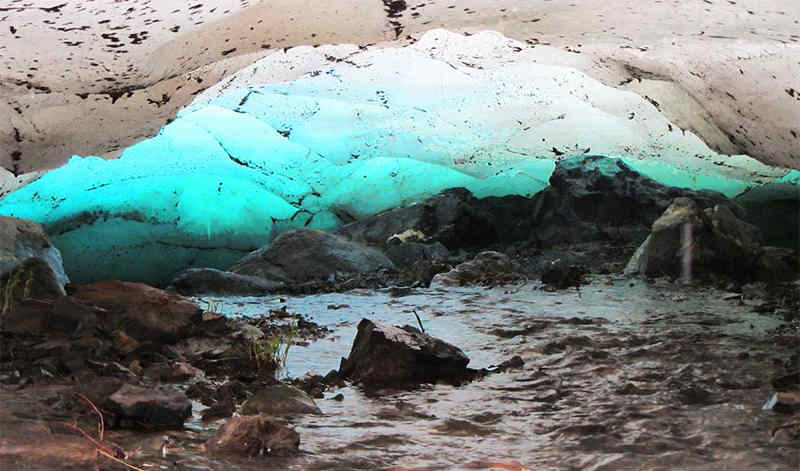
After breakfast; our tour will continue on Yoliin Am in the east of the Govi Gurvan Saikhan area in Umnugovi province. There is a gorge in the Gobi and is characterized by iced up to July. It is home of rare animals. When you arrive in the morning, you may see Argali, ibex, and leopard.
Lunch at a roadside restaurant.
Planned activities: visit Yoliin am’s canyon.
Dinner and overnight at nomad family
Day 5: Yoliin am to Bayanzag /210km – 3 to 4 hours drive/
Breakfast, and drive to the north and Bayanzag “Flaming Cliffs”.
Bayanzag “Flaming Cliffs” are located in the province of Ömnögobi (“South Gobi”).
Their name means “rich in saxaul”, an endangered Central Asian tree 2 to 9 m high, whose roots are precious to protect soil from erosion.
Significant paleontological discoveries have been made there, especially by American paleontologist Roy Chapman Andrews in 1920: fossilized dinosaur eggs and specimens of Velociraptor.
Their nickname of “Flaming Cliffs” is due to the orange-red rock the mountain is made of.
Hike the cliffs.
Dinner and overnight bivouac
Day 6 and 7: Bayanzag – Khongor sand (180km – 3 to 4 hours drive)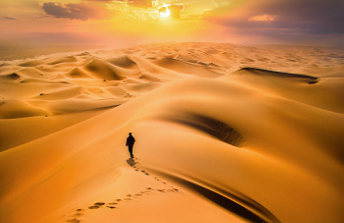
Today we will continue our journey in Khongor’s sand. Mongolian biggest sand hill on the first day of the day, we spent a tent in a beautiful place.
The site is one of Khongor‘s largest and most famous sand dunes, and the most important moment of our journey will be here. We will ride on the camels and ski board between the sand dunes. Enjoy on the musical sand dune to see sunset. We will be there 2 days.
Planned activities: Hiking between dunes, Sand board near Seruun spring, Camel tour,To visit Mongolian family
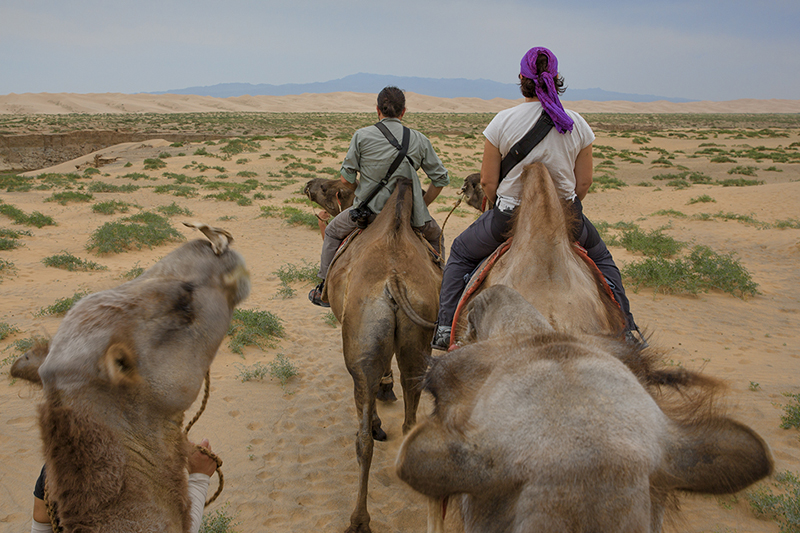 First night bivouac in the dunes, second night at the camp of yurts (2 to 4 people per yurt, with single beds, showers in a separate building).
First night bivouac in the dunes, second night at the camp of yurts (2 to 4 people per yurt, with single beds, showers in a separate building).
Day 8: Khongor Sand – Uush Shakhlaga (180km – 3 to 4 hours drive)
After the breakfast, we continue our journey to the North and the Uush Shakhlaga.
In the morning, we discover petroglyphs that date back to the Bronze Age. After this visit, we will discover the 2 natural pyramids and cliffs in amazing formation that contain various natural minerals.
Picnic on the road
Planned activities: petroglyphs date from the Bronze Age, pyramids, cliffs
Dinner and overnight bivouac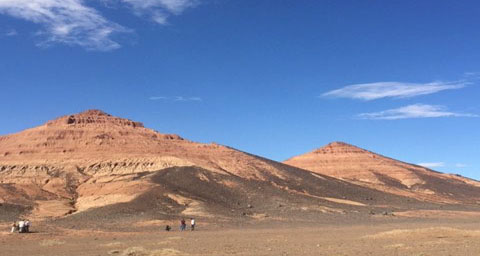
Day 9: Uush Shakhlaga – Khujirt (220km – 4 to 6 hours drive)
Today, we leave the Gobi region and continue our journey to the Khangai chain, the second largest mountain range in Mongolia. Here you will learn how to distinguish between a family living in Khangai and the Gobi. It will be a very special experience for you. Before coming to the nomadic family, we stop at the Horse Sanctuary complex. In this region, the Mongols prayed before the horse race. In 2008, the Horse Sanctuary complex was built. The monument of many horses won at the Naadam festival is immortalized here.  The particularly famous monument of the horse Arvagar-Kheer is placed in the center.
The particularly famous monument of the horse Arvagar-Kheer is placed in the center.
Planned activities: Visit Horse shrine complex, to meet local’s lifestyle
Lunch at a roadside restaurant.
Dinner and night with hosts in yurt.
Day 10: Khujirt – Kharkhorin (120km – 2hours)
After breakfast; we continued to Kharkhorin.
We will be camping near the city of Kharkhorin. Mongolia’s first capital city.
Planned activities: visit the Erdene Zuu monastery
Karakorum (Kharkhoryn) is the ancient capital of the Mongol Empire, founded in 1235 by Ogödei, the son of Genghis Khan.
In 1260, Kublai Khan transfers the capital to Beijing. Karakorum was destroyed in 1388 by troops of the Ming Dynasty. Of its former glory remain mere turtle statues guarding the entrances to the city walls.
In 1585, the Erdene Zuu has been built just outside the walls of the ruins of the ancient capital after the introduction of Buddhism in Mongolia as the state religion. Stones from the ruins of Karakorum were used in the construction.
It is surrounded by a wall with 108 stupas. 108 is a sacred number in Buddhism, and it is also the number of beads in a Buddhist rosary (mala).
The monastery was damaged in the 1680s, but was rebuilt in the eighteenth century and in 1872.
For centuries, Erdene Zuu was the most important religious shrine in Mongolia.
In 1939 the communist leader Horloogiyn Choybalsan destroyed the monastery, in a purge that resulted in the disappearance of hundreds of monasteries in Mongolia and killed over ten thousand monks.
Three small temples and the outer wall with the stupas remained; the temples became museums in 1947.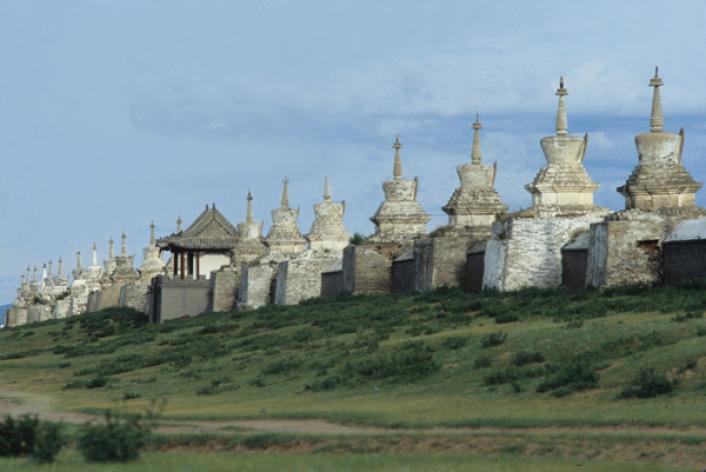
After the fall of communism in Mongolia in 1990, the monastery was given to lamas and Erdene Zuu again became a place of worship.
The site was restored at the end of the century and regained part of its religious aspect. Today Erdene Zuu remains an active Buddhist monastery as well as a museum that is open to tourists.
Lunch at Karakorum.
Dinner and overnight bivouac
Day 11: Kharkhorin – Elsen Tasarkhai (100km – 1.5 hours)
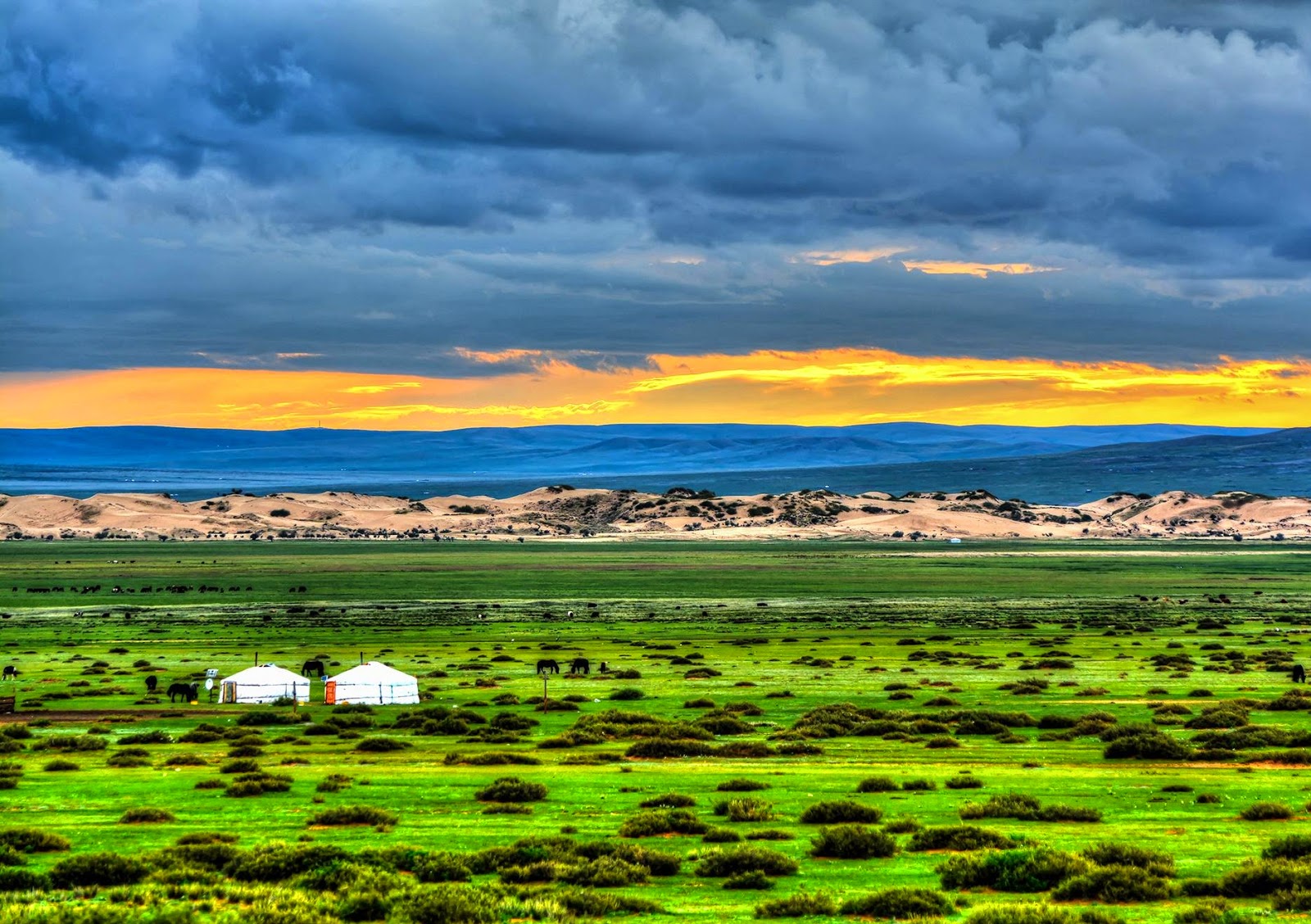 After the breakfast; will drive to Elsen Tasarkhai.
After the breakfast; will drive to Elsen Tasarkhai.
The day is devoted to the discovery of the traditional lifestyle of the nomads of Mongolia.
Each yurt camp is home to a family whose daily lives are punctuated by the care of herds: milking mares, sheep, goats, caring for sick or debilitated animals, moving animals to new pastures…
Women also take care of children; they cook, prepare different milk products (butter, cheese, fermented mare’s milk, drinking milk …) and maintain the interior of the yurt.
The men look after animals, maintenance of hardware and harness horses. They also cut wood for cooking.
We can participate in these activities, and become acquainted with the various family members.
During the day we can easily reach the famous Elsen Tasarkhai dunes, on foot or on horseback.
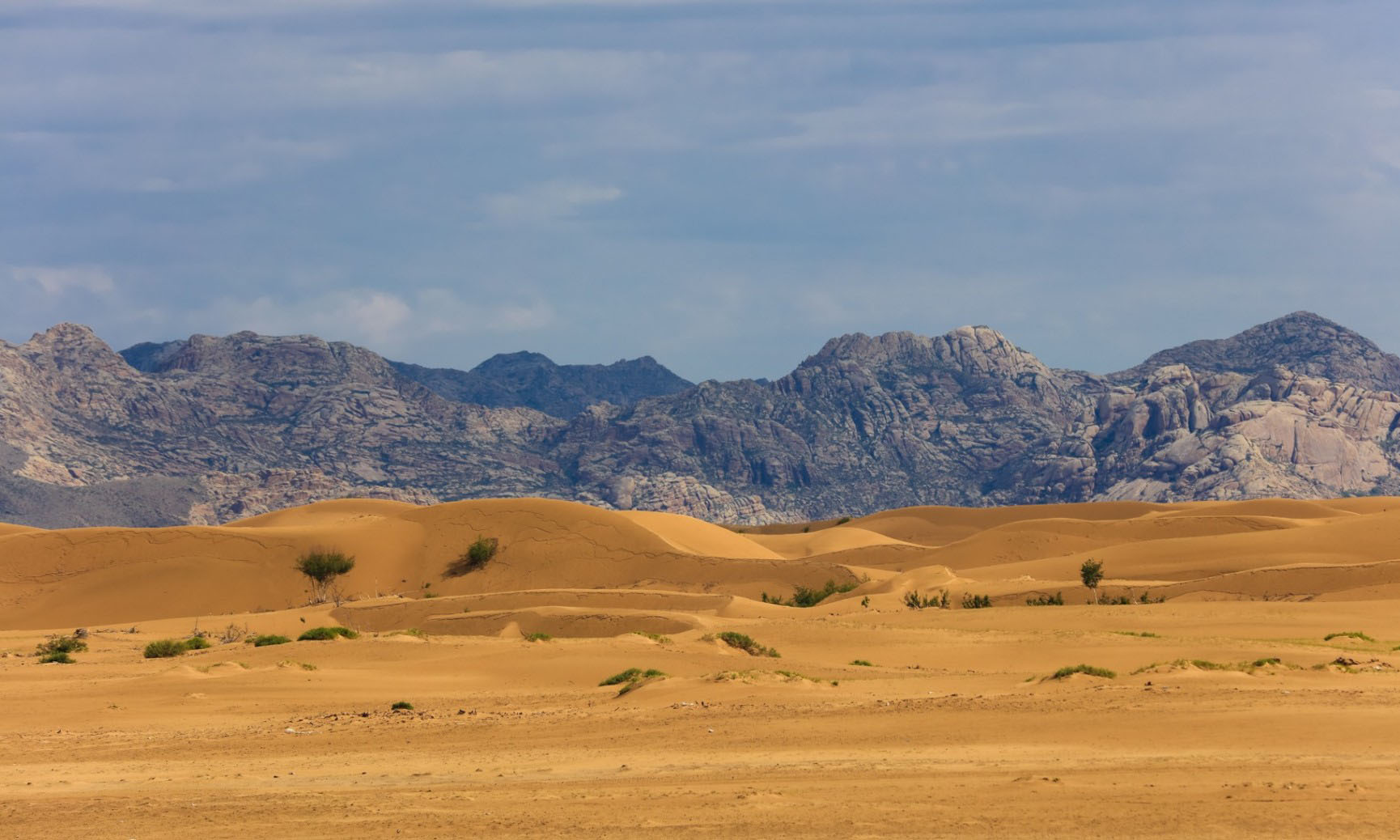 Elsen Tasarkhai is a sand dune that stretches to 80 km long, 3 km wide across Burd canton of Uvurkhangai province and Gurvanbulag canton of Bulgan province. Dividing the southern part of the sand dune with the so-called Mongolian sand, the northern part of the sand dune is called Khugnu Tarna. Due to the suddenness resulted from Tarna River flowing in the western part of the sand dune; it is covered with rare plants such as willow, elm, and dogwood etc. There is a rocky mountain called “Khugnu Khan” in the north and the Ikh Mongol Mountain lies in the south that defines the central point of Mongolia. The widest part of the sand dune is located on the skirt of Ikh Mongol Mountain and at the sight of Sharlin and Jargalant River covering 9-10 km square area.
Elsen Tasarkhai is a sand dune that stretches to 80 km long, 3 km wide across Burd canton of Uvurkhangai province and Gurvanbulag canton of Bulgan province. Dividing the southern part of the sand dune with the so-called Mongolian sand, the northern part of the sand dune is called Khugnu Tarna. Due to the suddenness resulted from Tarna River flowing in the western part of the sand dune; it is covered with rare plants such as willow, elm, and dogwood etc. There is a rocky mountain called “Khugnu Khan” in the north and the Ikh Mongol Mountain lies in the south that defines the central point of Mongolia. The widest part of the sand dune is located on the skirt of Ikh Mongol Mountain and at the sight of Sharlin and Jargalant River covering 9-10 km square area.
In the evening, our hosts will prepare a traditional specialty, the Khorkhog, the “Mongolian barbecue”.
The Khorkhog is a traditional nomadic specialty of the Mongolian steppe. You will almost never find it in a restaurant.
To prepare the Khorkhog, nomads cut mutton or goat into pieces, keeping the bones. Twenty stones the size of a fist are heated in the fire.
When hot enough, they are placed in layers with the meat in a metal container, which is often a milk can.
Other ingredients are added over the stones and meat, potatoes, carrots, cabbage, seasoning …
Water is added in sufficient quantity for all of the ingredients to be cooked both by the steam and the heat of stones. The container is closed and placed on the fire for an hour to an hour and a half.
At the opening of the container, the Khorkhog is ready to eat.
The family takes out the meat and vegetables, and the stones which turned black, both because of the fire and the fat that they have absorbed.
These stones are still warm and the guests keep them in their hands because Mongols consider them as beneficial to health.
We usually eat the Khorkhog with fingers, with the help of a knife to cut the meat.
Night in the guest yurt at our nomad family home.
Day 12: Elsen Tasarkhai – Ulaanbaatar (280km – 3 to 5 hours drive)
Breakfast and drive to Ulan Bator.
Lunch on roadside restaurant.
Afternoon is dedicated to shopping in stores downtown, or at the Narantuul “black market” where you will find traditional clothing and objects of daily life.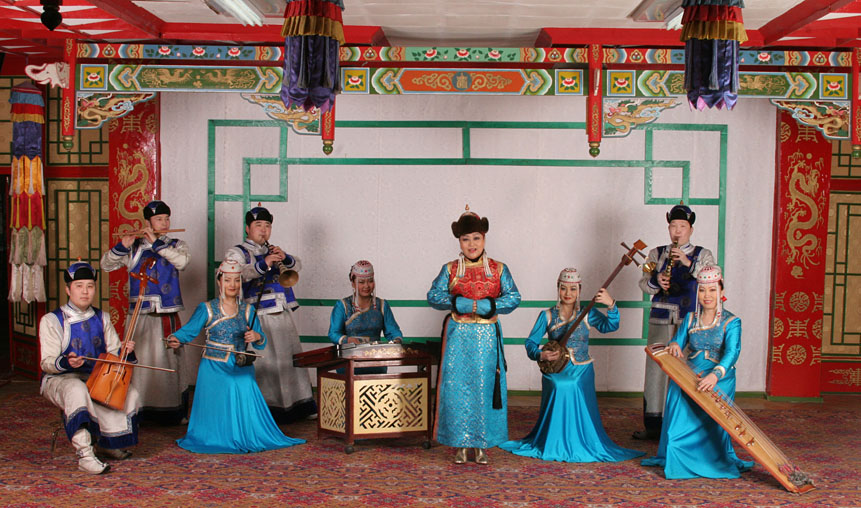
Visit a cashmere factory.
In the late afternoon, you will attend a show with traditional dances, music and songs from Mongolia, especially the amazing Khoomei.
The Khoomei is an overtone singing (throat singing) in which the singer produces two distinctively audible pitches at the same time, including a low pedal note, or drone, derived from the fundamental frequency of the vocal cord vibrations, and higher melodic notes that result when the singer’s mouth acts as a filter, selecting one note at a time from among the drone’s natural overtone series pitches.
The sound is reminiscent of the Jew’s harp.
This type of song is recorded in Intangible Cultural Heritage of Humanity by UNESCO in 2010.
Dinner downtown and overnight at a 3* hotel (local standard) in the center of Ulaanbaatar.
Day 13: Return Home
Breakfast (depending on your flight schedule) and transfer to airport for your flight back home.
INCLUDED
- Airport / hotel / airport transfers
- 2 nights in a ** hotel in Ulaanbaatar, breakfast included
- Full board during the excursion
- Meal at Ulan Bator
- Mineral water
- 1 nights in a comfortable yurt camp with hot shower
- 3 nights home-stay, in guest yurt
- 6 nights in a tent
- Travel in 4×4 or mini bus + driver
- Gasoline
- English speaking guide
- Cook for groups> 4 participants
- Camel ride
- Local guides on hikes
- Entrance fees to the parks and museums mentioned
- Traditional show
- Kitchen equipment (camping tables and chairs) and for sleeping (sleeping bag and self-inflating mattress)
NOT INCLUDED
- International transport
- Passport & Visa Fees
- Repatriation insurance
- Travel insurance
- Extra drinks / alcohols
- Phone calls
- Any excursion not mentioned in the program
- Baggage supplement if you are carrying more than 15Kg (hold and cabin baggage combined)
